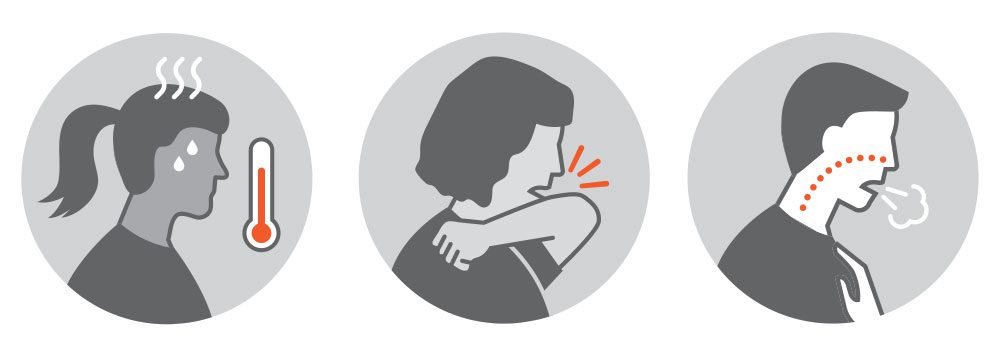Most people who get sick with COVID-19 will have a mild illness and should recover at home. Care at home can help stop the spread of the coronavirus and protect people who are at risk of getting seriously ill. Here are a few tips on how to prevent the spread of germs at home when caring for someone diagnosed with COVID-19:

Monitor symptoms:
- The most common symptoms of COVID-19 are fever, cough and shortness of breath. If your symptoms are mild, stay home and consult by phone with your primary physician if needed on appropriate steps to take.
- More severe symptoms of COVID-19 include trouble breathing, persistent pain or pressure in the chest, confusion and bluish lips or face. If your symptoms are severe and life-threatening, call 911.
Limit shared living spaces and avoid sharing household items:
- Have the person with COVID-19 stay in one room, away from other people and pets.
- If possible, do not share the same bathroom.
- Deliver meals to the person with the illness instead of having them enter the kitchen.
- Do not share dishes, drinking glasses, eating utensils, towels or bedding.
Practice good hygiene:
- Everyone should cover their mouth and nose with a tissue when they cough or sneeze, then dispose of the used tissue in a lined trash can. Immediately wash hands with soap and water for 20 seconds.
- Thoroughly wash your hands often with soap and water for at least 20 seconds. This includes backs of hands up to the wrist, between the fingers and underneath finger nails.
- Use hand sanitizer when soap is not available.
Clean all common surfaces and areas every day:
- Use household cleaners that are safe and effective. For disinfection, diluted household bleach solutions, alcohol solutions with at least 70% alcohol, and most common EPA-registered household disinfectants should be effective.
- Wear gloves and open a window for ventilation.
- Common areas include:
- Furniture such as tables, chairs, desks, cabinets and beds.
- Kitchen counters, bathroom fixtures, toilets and bathtubs or showers.
- Follow manufacturer’s guidance on cleaning high-touch electronics such as remotes, phones, keyboards and tablets.
Discontinuing home isolation:
For individuals with symptoms who are confirmed or suspected to have COVID-19 and are directed to care for themselves at home, end home isolation under the following conditions:
- Three days (72 hours) after the fever is gone without use of fever-reducing medications AND you see an improvement in your initial symptoms (e.g. cough, shortness of breath);
- If you did not have a
fever, three days (72 hours) after you see an improvement in your initial
symptoms (e.g. cough, shortness of breath);
OR - Seven days after symptoms began, whichever is longer.
This information is sited from the Washington State Department of Health and the Centers for Disease Control and Prevention